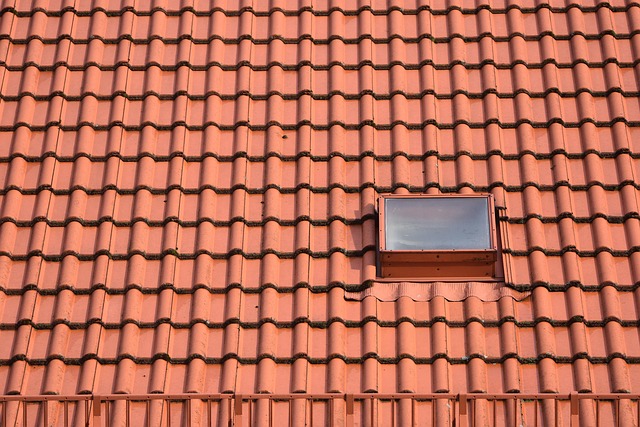Residential roofing damage, from weather, aging, or neglect, can lead to costly interior harm and structural integrity issues. Early identification of problems like leaks or damaged shingles is crucial for preventing mold, rot, and reduced insulation. Regular inspections and prompt repairs extend roof lifespan, with material types (asphalt, metal, tile) offering varying durability and maintenance needs. Professional roofing assessments pinpoint damage, provide detailed evaluations, and guide suitable solutions. Repair costs range widely based on damage and roof type, emphasizing the importance of skilled craftsmanship for long-term savings and system longevity through proper annual maintenance.
Roof repair services are an essential aspect of maintaining your home’s integrity and protection. Understanding common roof damage in residential properties is the first step towards ensuring your rooftop’s longevity. This article guides you through identifying signs necessitating professional roofing services, exploring different residential roofing materials, and providing cost considerations for various repair scenarios. Learn how timely repairs can prevent larger issues and discover maintenance tips to extend your home’s roof lifespan, ultimately enhancing its value and reliability.
Understanding Common Roof Damage in Residential Properties

Roof damage is a common issue for residential properties, often caused by exposure to harsh weather conditions, aging, or poor maintenance. Identifying these issues early is crucial for effective and efficient roof repair services in residential areas. One of the most prevalent types of damage is leaking roofs, which can result from missing or damaged shingles, flashing, or gutters. These problems not only compromise the structural integrity of a home but also lead to costly interior damages due to water infiltration.
Another common issue is roof wear and tear caused by aging. Over time, shingles become brittle, curl, or crack, allowing moisture and debris to penetrate the roof surface. Additionally, strong winds can rip off shingles or cause them to shift, leading to significant structural damage if left unaddressed. Regular inspections are essential for homeowners to stay ahead of these issues, ensuring prompt repair or replacement when needed, thereby maintaining the overall health of their residential roofing systems.
The Importance of Timely Roof Repairs for Homes

When it comes to maintaining a home, roof repair services often take a backseat to other more visible or immediate needs. However, neglecting roofing issues can have severe consequences over time. A timely roof repair is not just about aesthetics; it’s a crucial investment in your home’s structural integrity and long-term protection from the elements.
In the world of residential roofing, early intervention matters. Even minor leaks or damaged shingles can escalate into major problems if left unattended. Prompt repairs prevent water intrusion, which could lead to mold growth, rot, and even compromised insulation efficiency. By addressing roof issues swiftly, homeowners can save themselves from costly renovations, avoid health hazards associated with moisture-prone environments, and ensure their property’s value remains intact.
Identifying Signs Requiring Professional Roofing Services

Many homeowners often ignore small signs of trouble, assuming they can wait until the next annual inspection. However, addressing roof issues early is crucial for maintaining a secure and comfortable living space. Regular observations are key to identifying potential problems with your residential roofing system. Look out for missing or damaged shingles, as these could be an indication of weather-related wear and tear or animal infestation. Fading or discolored spots on the roof surface may signal underlying leaks that require immediate attention from professional roofing services.
Additionally, keep an eye out for unusual noises coming from your attic or ceiling during storms, which might suggest structural damage. Cracks in the roof framing or signs of water intrusion should never be overlooked. Timely intervention by qualified professionals can prevent minor issues from escalating into costly repairs and ensure the longevity of your residential roofing system.
Types of Residential Roofing Materials and Their Lifespans

Roofing materials play a vital role in protecting your home from the elements, and understanding their lifespans is crucial for timely repairs or replacements. The most common types of residential roofing include asphalt shingles, metal, tile, and wood shakes or shingles. Asphalt shingles are the most widely used due to their affordability, ease of installation, and durability—typically lasting between 20-30 years with proper maintenance. Metal roofs offer excellent resistance to fire, rot, and rust but have a slightly shorter lifespan of around 25-30 years. Tile roofing is known for its beauty and longevity, ranging from 40-70 years, while wood shakes or shingles require more frequent replacement, averaging between 15-25 years.
Each material has unique characteristics that influence their performance over time, affecting the overall residential roofing cost and maintenance requirements. When considering roof repair services, homeowners should consult professionals to assess the current state of their roof and recommend appropriate solutions based on these factors, ensuring optimal protection for their homes.
What to Expect During a Roof Repair Assessment and Evaluation

When it comes to roof repair services for houses, understanding what to expect during an assessment and evaluation is crucial. The first step in any residential roofing project begins with a thorough inspection. A professional roofer will carefully examine your roof’s structure, shingles, flashing, and underlayment for signs of damage or wear. They’ll look for missing or damaged shingles, leaks, moisture buildup, and any structural weaknesses. During this process, they may use specialized tools to identify problem areas that might not be immediately visible.
After the assessment, the roofer will provide a detailed evaluation, outlining the extent of the repairs needed. This includes estimating costs, discussing repair options, and explaining the benefits of different materials and techniques. In terms of residential roofing, this step is vital as it ensures you receive accurate information about your roof’s condition and the most effective way to restore or enhance its integrity.
Cost Considerations for Different Roof Repair Scenarios

Roof repair costs can vary greatly depending on the extent of the damage and the type of roof your home has. For minor issues like missing shingles or small leaks, repairs can often be affordable, with materials typically costing between $50 to $100 per square foot. Professional labor rates usually range from $2 to $5 per square foot, making these routine fixes relatively inexpensive.
More complex scenarios, such as extensive damage from storms or significant structural issues, will lead to higher costs. Replacement shingles or even an entire roof replacement can run anywhere from $7,000 to $15,000 or more for a typical residential roofing project. It’s crucial for homeowners to consider not only the immediate repair cost but also potential long-term savings through proper maintenance and durability of the new or repaired roof, often achieved with high-quality materials and skilled craftsmanship.
Maintenance Tips to Extend the Lifespan of Your Home's Roof

Regular maintenance is key to extending the lifespan of your residential roofing system. Start by inspecting your roof at least twice a year for any signs of damage, such as missing or damaged shingles, flashing issues, or moisture buildup. Addressing problems early can prevent minor repairs from turning into significant, costly damages.
Keep your gutters clean and well-maintained to ensure proper water flow off the roof. Remove debris like leaves and branches regularly to avoid clogging, which can lead to water pooling and potential leaks. Additionally, consider sealing any cracks or gaps in the roof’s underlayment and making sure vents are unobstructed to maintain optimal air circulation, reducing wear and tear on your roofing materials.
